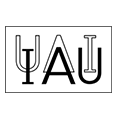Acta Historica Astronomiae Vol. 9 - Wittmann
Did Struve observe the nucleus of Halley's comet in 1835?
Axel D. Wittmann, Göttingen
Abstract
During its apparition in 1835 Halley's comet reached its minimum distance from the earth (0.187 au) on 13 October in the constellation of Ursa Major. Telescopic visual observations were made, e.g., by F.W. Bessel at Königsberg and by F.G.W. Struve at Dorpat (Tartu). In particular a drawing made by Struve on 8 October of what he calls the 'nucleus' and describes as a small, slightly yellowish glowing piece of coal of elongated shape bears such a striking resemblance to the images of Halley's nucleus obtained in 1986 by the Giotto spacecraft that it merits further examination: Could Struve, who had been using a 24.4 cm refractor at 254-fold magnification, possibly have observed the real nucleus? Closer examination shows that neither Struve's maximum possible resolution (0.13" or 23 km at the comet), nor his measured size of the nucleus (160 x 400 km), nor his verbal description of the nucleus (as a bright object) support this idea: It rather seems that the term 'nucleus' was used at the time for the brightest, innermost part of the coma. It is concluded that, nevertheless, Struve quite correctly envisaged the structure of the innermost coma, and to a considerable degree of accuracy anticipated the correct shape and structure of the nucleus (elongated, 1:2) and its localized sources of outstreaming gas.
Bibliographical details:
Axel D. Wittmann: Did Struve observe the nucleus of Halley's comet in 1835?. In: Klaus Hentschel, Axel D. Wittmann (Eds.): The Role of Visual Representations in Astronomy: History and Research Practice (Acta Historica Astronomiae; 9). Thun ; Frankfurt am Main : Deutsch, 2000, p. 79-89.



